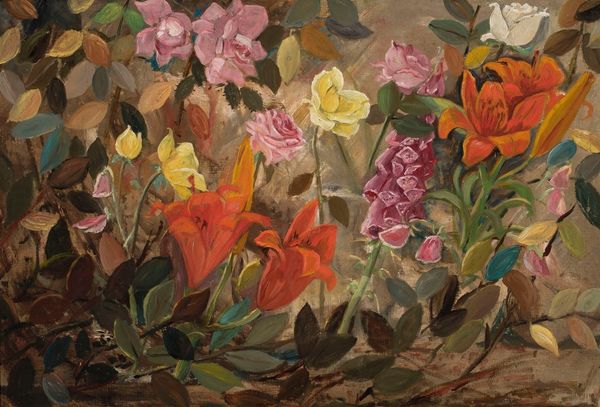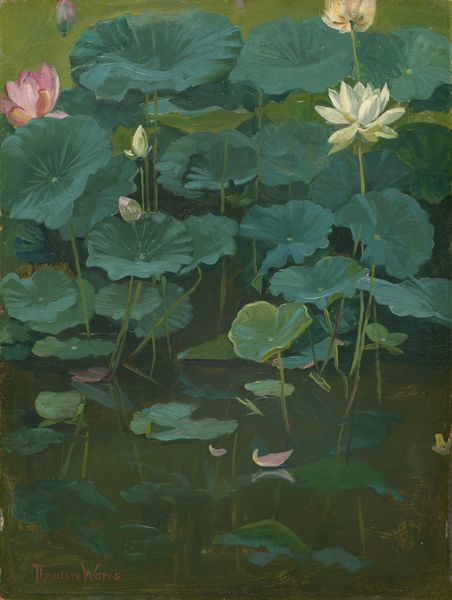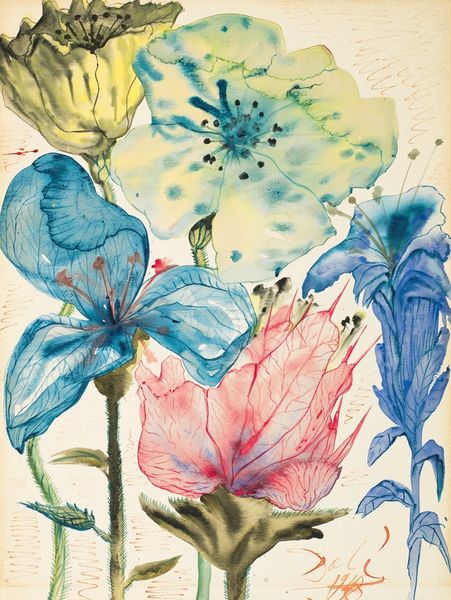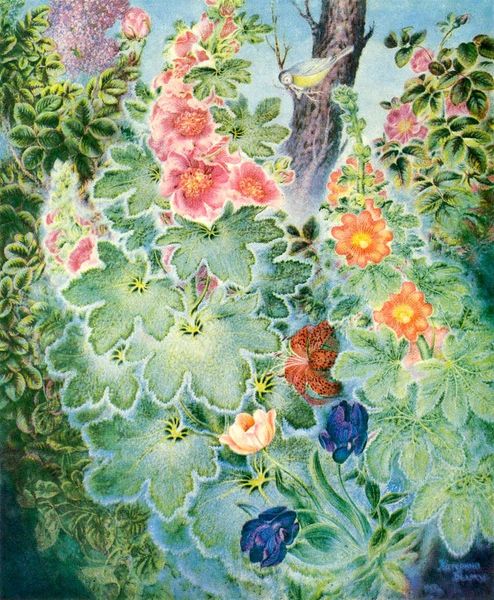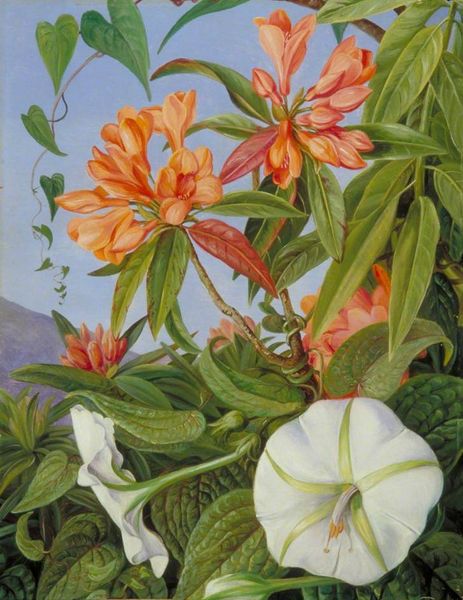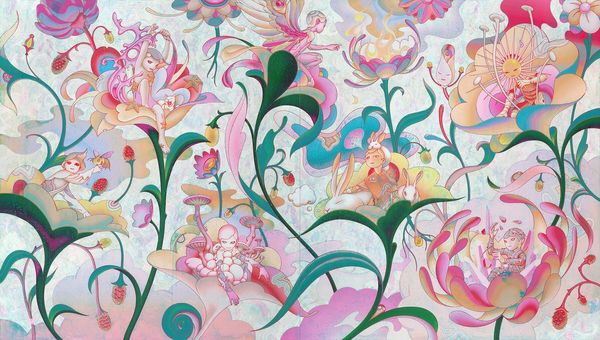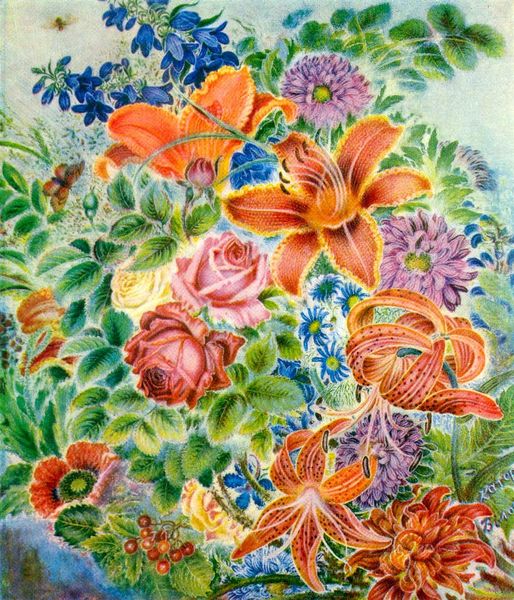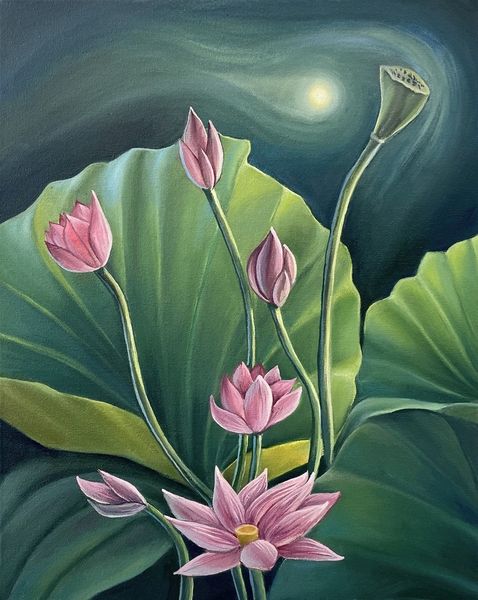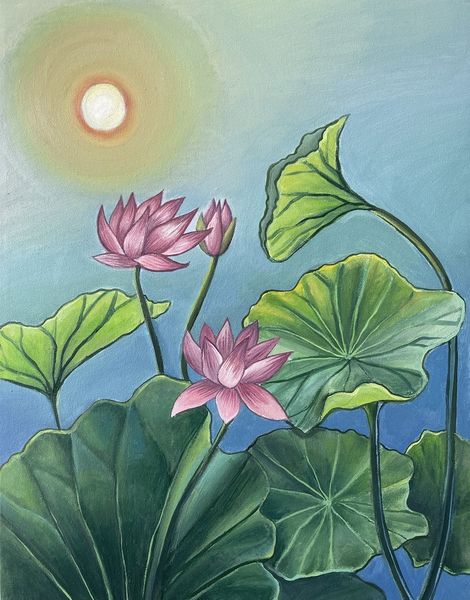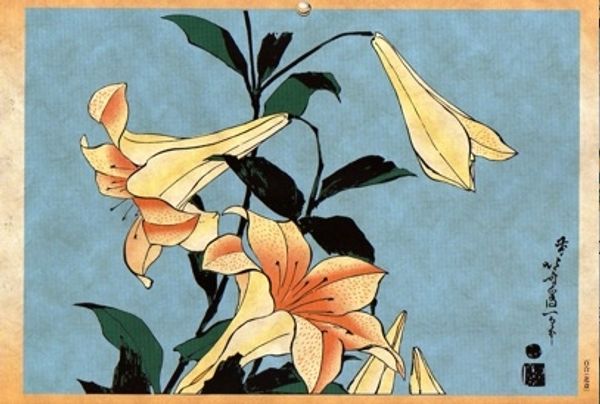
#
tropical
#
abstract painting
#
egg art
#
impressionist landscape
#
fluid art
#
flower pattern
#
watercolour illustration
#
floral
#
pattern in nature
#
watercolor
Copyright: Rita Angus,Fair Use
Editor: Here we have Rita Angus's "Waterlilies," painted in 1950. It’s a watercolour painting with beautiful translucent layers. It's lovely! What strikes me most is its intricate details despite the simplicity of the subject. What stands out to you? Curator: What interests me immediately is the chosen medium of watercolor. Watercolour carries certain historical baggage— often relegated to amateur or decorative art. So, why does Angus, a serious modernist painter, embrace this seemingly "lesser" material? What does the labor involved reveal? Editor: So, you’re suggesting the medium itself challenges some traditional art hierarchies? I hadn't considered that. Curator: Precisely. The fluidity and perceived ease of watercolour contrasts sharply with the precise, almost scientific observation in the floral arrangement. How much control did Angus have over her materials? It begs us to investigate her studio practice and her relationship to the act of painting. Editor: The delicate washes of colour are fascinating. You can almost see her building it up, layer by layer, such a deliberate production. Curator: Yes, consider the cost, accessibility and sourcing of materials in post-war New Zealand. Watercolour, compared to oils, would have been readily available, making art production possible in a time of resource constraints. Editor: So, the limitations could have actually fuelled her creative choices, that is fascinating! Thanks, that gives me a whole new appreciation for this piece. Curator: Indeed! By understanding the material context, we gain insight into Angus’s artistic choices and a deeper understanding of the artwork's significance.
Comments
No comments
Be the first to comment and join the conversation on the ultimate creative platform.
